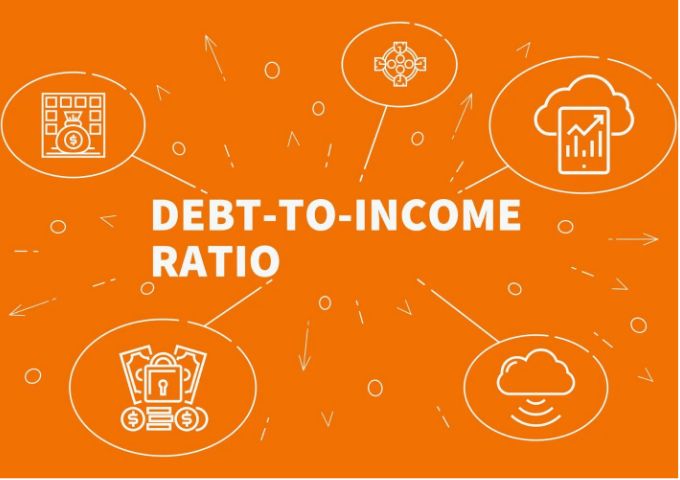Understanding Debt-to-Income Ratios: Key Insights for Homebuyers
Introduction to Debt-to-Income
When working with a mortgage lender, it’s essential to have a conversation about your debt-to-income ratio (DTI). If you’re working with me, we will discuss this no matter what, even though many other lenders may overlook it. If you’re a lender reading this, please make sure you’re educating your clients about debt-to-income—it’s crucial. But what exactly is DTI, and why should you care? It’s one of the biggest indicators of whether you’ll enjoy financial stability after purchasing a home or become “house poor.” As housing affordability continues to decrease, more lenders are max-qualifying buyers, which can lead to financial strain.
The Risks of Max Qualification
As I’ve said in previous articles, do not get max-qualified. It leads to financial hardship, forcing you into a situation where you’re house poor and unable to enjoy life outside your home. Unfortunately, this happens all the time. Sometimes, buyers request it, or lenders assume that’s what clients want, or even real estate agents push for higher approval to meet pricing demands. While it may seem like the only option at times, being max-qualified often results in regret, and it’s vital that you understand the implications.
Understanding Debt-to-Income Ratios
To break it down, there are two components to DTI: the front-end ratio and the back-end ratio. The front-end ratio compares your proposed housing payment (including principal, interest, taxes, and insurance) to your gross income (income before taxes). For example, if you earn $10,000 a month and your housing payment is $3,000, your front-end ratio would be 30%.
The back-end ratio takes your housing payment and adds your other monthly debt payments (such as car loans, credit cards, and student loans) and compares it to your gross income. If your housing payment is $3,000 and your other debts amount to $1,000, your total debt is $4,000. Against a $10,000 income, your back-end ratio would be 40%.
Resources for Learning
I’ve covered this in greater detail in previous articles, including one where I break down the math step-by-step using a whiteboard. I highly recommend you watch it because understanding these numbers is crucial for avoiding financial stress when buying a home. Recently, I’ve been fully underwriting every client in my pre-approval process to minimize surprises later on. After this, I spend time reviewing everything with clients, particularly their DTI, to ensure they’re comfortable with the numbers.
Evaluating Your Financial Situation
For example, if your front-end ratio is 30% and your back-end ratio is 35%, you’re in a solid position with room to adjust if necessary. But if your front-end is 50% and your back-end is 55%, we need to have a serious discussion. In such cases, I’ll ask if there’s additional income I may not be aware of because I want to ensure you’re not heading toward financial strain. It’s all about understanding what you can truly afford month-to-month.
The Importance of Understanding Your Commitments
The reality is, many homebuyers go through the process without fully understanding the financial commitment they’re making. They rely on their real estate agent’s referral to a lender, get a pre-approval letter, and go house shopping without reading the fine print. Then, at the closing table, they’re shocked by their monthly payment, realizing too late that it’s more than they can comfortably afford.
You can avoid this by knowing your DTI upfront. If I see a 50% back-end ratio, I’ll discuss whether it’s manageable. Sometimes, not all household income can be used to qualify, like when one spouse has poor credit and isn’t on the loan. But if we’re using every dollar you have, including bonuses and overtime, to qualify you, and your DTI is still 50%, you’re walking a financial tightrope. If anything goes wrong—like losing overtime or bonuses during a recession—you could find yourself in serious trouble.
Having the Right Conversations with Your Lender
This is why having a conversation with your lender about DTI is so important. If you don’t have a lender, my team and I are licensed in 48 states and would love to help you. Just schedule a call through the link provided. If you’re working with another lender, make sure you’re having this discussion with them. If they question why you’re asking, it’s a red flag. You want a lender who takes the time to explain things and ensures you understand every aspect of your financial situation.
Seeking the Right Guidance
The mortgage industry has many great lenders who prioritize their clients, but unfortunately, there are also those who don’t take the time to educate buyers. It’s essential to find a lender who will talk to you about DTI, help you plan your payments, and make you feel confident in your decision. You deserve to work with someone who makes you feel informed and comfortable throughout the process.
Conclusion
I hope this article has been helpful. If you have any questions or comments, feel free to leave them below. Thanks for reading!








